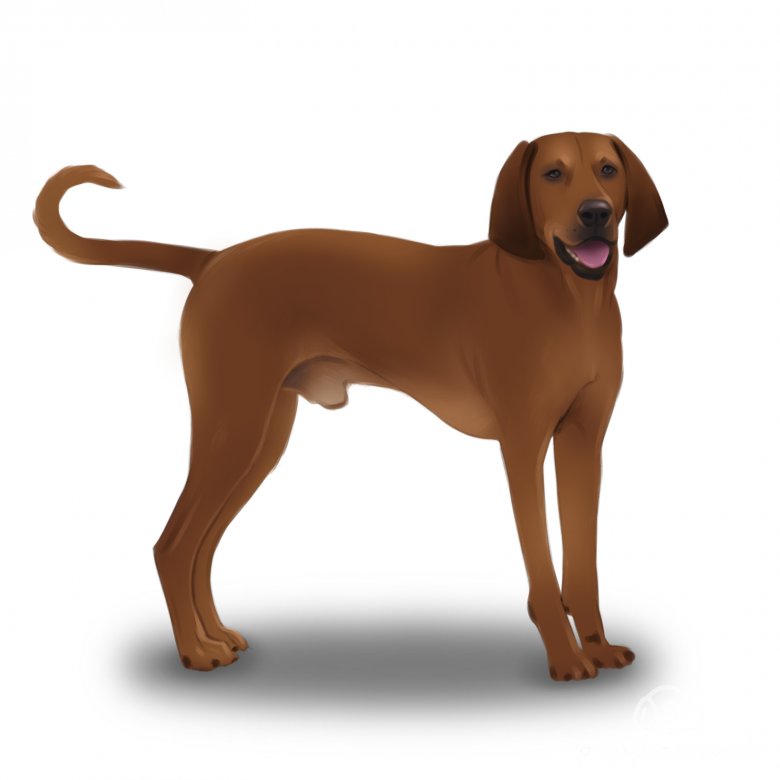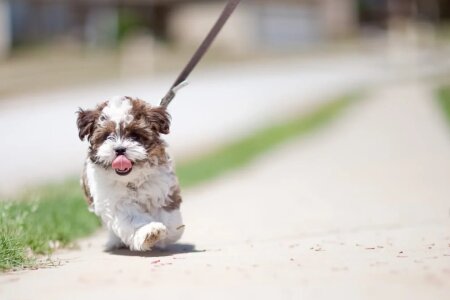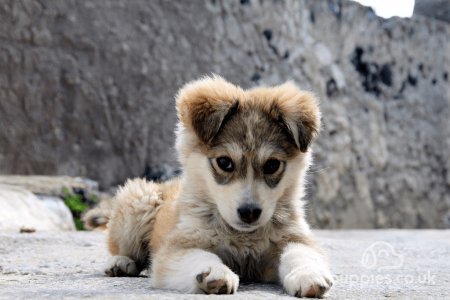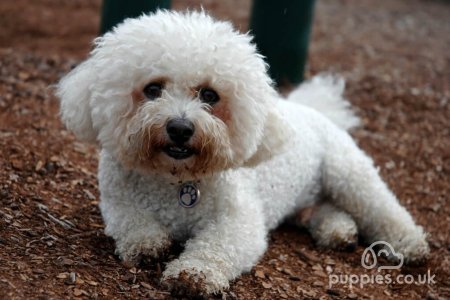Coonhound (Black and Tan Coonhound, American Black and Tan Coonhound)
Overview
The adaptable, well-tempered, and lovable Coonhound is an easygoing and friendly companion that is sure to make your heart jump with joy. These American scent hounds were originally used in Colonial America for hunting raccoons and many other animals native to that continent, but today make for wonderful home companions as well.
Do not mistake the American Black and Tan Coonhound for its other cousins, however. There are six officially recognised breeds of Coonhound in the United Kennel Club, so for the sake of clarity, all references here to Coonhounds refer to the American Black and Tan Coonhound.
Physical Appearance
A large-sized breed, the Coonhound appears powerful, alert, and agile with an impressively rhythmic gait. Much like other scent hounds, the Coonhound is a tough working dog that is muscular with a moderate bone structure, thus well-adapted to hunting amongst woodlands and brush.
Nearly round hazel to dark brown eyes exude alertness whilst low-set and distinctively long ‘flappy’ ears droop down well past the neckline. Their tails are strong and robust and carried at a 90-degree angle whilst in motion.
Coonhounds are covered with a short, dense coat of fur that is always in dark coal (black) and tan. Black ‘pencil markings’ are common on the toes. Any other colour variations mean that it clearly isn’t a Black and Tan Coonhound!
The breeds that most resemble the Coonhound are, naturally, other Coonhounds such as the English Coonhound, Bluetick Coonhound, Redbone Coonhound, Plott Hound, and the Treeing Walker Coonhound. They somewhat resemble Daschunds and Beagles but are distinctly large scent hounds.
How big do Coonhound dogs get?
Character Traits
Mellow and unobtrusive, the Coonhound is extremely well-adapted for living at home as a companion pet just as much as he is out in the woods as a hunting dog. His temperament is gentle, amiable, and certainly lovable. There is a possible downside, however. As a scent hound, his strong scent and prey drive can easily kick in the moment he’s outdoors and a strong, stubborn side can present itself.
In this manner, Coonhounds have an independent streak both indoors and outdoors, but when well trained and socialised they’ll make for highly trainable, loyal, and obedient companions for owners and their families.
Are Coonhound dogs intelligent? Yes, somewhat.
Are Coonhound dogs affectionate? Yes, exceptionally.
Do Coonhound dogs have high or low energy levels? Very high energy.
Are Coonhound dogs loyal? Yes, very.
Are Coonhound dogs playful? Yes, somewhat.
Are Coonhound dogs aggressive? No.
Are Coonhound dogs easy to train? Yes.
Are Coonhound dogs good guard dogs? No, but they can make for reasonable watchdogs.
Ability to Socialise
One of the greatest benefits to owning a Coonhound puppy is that they are just so easy to socialise and they’ll naturally get along well with anyone in the home, including children, other cats and dogs, or even smaller pets like birds. Inside of the home, they’re playful and sociable, always applying their high energy levels towards playing and arousing smiles and laughter from their beloved owners.
As with all breeds, however, human interaction is important and most breeds, especially the Coonhound, really don’t tolerate separation anxiety well at all. Even just a few hours of isolation can leave them feeling bored and neglected, which can stimulate naughty behaviour such as chewing or nipping.
Do Coonhound dogs get along with other pets? Yes, they tend to get along well.
Do Coonhound dogs get along with other dogs? Yes, they tend to get along well.
Are Coonhound dogs good with kids? Yes, they love being around children.
Are Coonhound dogs good with strangers? Yes, somewhat.
Lifestyle Suitability
Coonhounds are well-known for being highly adaptable to many different living environments, but they thrive in open spaces such as large homes with ample garden space or fields in which they can work off some of their high energy. This makes them highly unsuitable for apartment living.
For prospective owners that don’t live in apartments, Coonhounds are an excellent breed that can tolerate warmth, cold temperatures, and are thus excellent for Britain’s climate. Furthermore, they are an excellent choice for first-time owners as they can be trained and socialised fairly easily, but also because they form tight bonds of affection with their owners.
In terms of maintenance, Coonhounds do shed profusely and are known to bark excessively, the latter of which can be minimised through proper obedience training and discipline (but never too harsh).
Are Coonhound dogs good for first-time owners? Yes.
Are Coonhound dogs hypoallergenic? No.
Are Coonhound dogs prone to drooling? Yes, a little.
Are Coonhound dogs a good breed for apartment living? Absolutely not.
Do Coonhound dogs shed a lot? Yes, they shed profusely throughout the year.
Do Coonhound dogs bark a lot? Yes, they are known to be yappy.
Can Coonhound dogs be left alone at home? No, only for brief moments.
Can Coonhound dogs handle the heat? Yes, very well.
Can Coonhound dogs handle cold temperatures? Yes, very well.
Are Coonhound dogs sensitive to loud noises? Yes.
General Health & Health Issues
Coonhounds are generally known to be a healthy breed, with a few possible health problems that may arise or may be inherited. They tend to live anywhere from around 10-12 years and, as puppies especially, should be regularly inspected for possible signs or symptoms of health problems.
Even if your Coonhound appears to be perfectly healthy, regular visits to the veterinarian can ensure that any health problems are diagnosed and treated sooner rather than later.
Some common problems include:
Hip dysplasia: as a rather large breed, Coonhounds are prone to hip dysplasia, which can lead to a limp gait or lameness of the leg(s);
Eye infections: as with most breeds, eye infections (and for that matter, ear infections too) can be problematic. Fortunately, eye infections can be treated with relative ease by your veterinarian;
Cataracts: another eye problem that Coonhounds may suffer from, cataracts develop a cloudy, film-like appearance over one or both eyes and can only be removed surgically.
How long do Coonhound dogs live? - 10-12 years
Exercise & Play Time
Every prospective Coonhound owner must be aware that they are quite intensive in terms of exercise needs. Indoors, they may appear jovial and even-tempered, but take them outdoors and their natural scent and prey drive will kick in and they’ll instinctively trail for miles upon miles.
Endeavour to take your Coonhound out for a walk every morning and spend no less than two hours total playing and exercising vigorously in the afternoon or evening with him. Engage their natural hunting instincts by throwing a stick and allowing them to roam off-lead whenever it is safe to do so. For this latter exercise, it’s important that your Coonhound have access to a large field or park where it is safe to exercise off-lead.
In terms of water play, Coonhounds have webbed feet and make great swimmers, although you should always thoroughly dry off their short coats and flappy ears after a swim.
How much exercise does a Coonhound dog need? - At least 2 hours per day
Do Coonhound dogs like water play? Yes, they are naturally prone to being great swimmers
Nutrition & Feeding
Coonhounds consume about as much food as one would expect, given their large size. The feeding quantity must be adjusted to meet their development and current weight. For this reason, it’s often best to stick rigorously to the breeder’s feeding schedule and to speak with a veterinarian about their diet if you feel that your Coonhound is eating too much (or too little).
Provide your Coonhound with a rich, nutritious diet full of vitamins and minerals and break feeding sessions into 2-3 sessions daily, at the same time to encourage a good feeding routine. Coonhounds are known to put on weight and can suffer from bloat as they age, further stressing the need for a high-quality diet appropriate for their age and weight.
Are Coonhound dogs prone to weight gain? Yes, especially as they age.
How much should I feed a Coonhound puppy? About 275-620g per day, in 2-3 sessions.
How much should I feed an adult Coonhound dog? About 280-450g per day, in total.
Care & Maintenance
Grooming a Coonhound is about as easy as it gets, so they’re an ideal breed for owners that don’t want to spend too much time fussing about grooming. One downside, however, is that they shed a profuse amount of hair all year long, so keeping the house clean will need to be a priority in order to keep the dead hairs out of sight and out of mind.
Emotionally, Coonhounds thrive on human interaction. Although they can have a somewhat independent streak to them, perhaps even showing stubbornness at times, this should not be mistaken for a desire to remain alone. Keep them company and give them lots of love and attention and it will most certainly be reciprocated in kind.
- Grooming: twice weekly, brush over your Coonhound to remove any dead hairs. Inspect his long flappy ears for signs of infection and check his eyes for infections.
- Emotional care: do not leave your Coonhound unattended for any longer than a few hours during the day. Try to always ensure someone is home to keep him company.
History of the Coonhound
The lineage of the American Black and Tan Coonhound goes back centuries, but the breed itself emerged from the Black and Tan Virginia Foxhound in America. Subsequently, the breed emerged from the Foxhound and Bloodhound and, earlier, English hounds such as the Talbot Hound, a mediaeval hunting hound that is perhaps the direct ancestor of today’s Coonhound.
When the Coonhound’s ancestors were brought over to America in the colonial period, they were highly prized in the south for their excellent stamina and ability to traverse the swampy marshland and terrains common in the southern colonies thanks to their webbed toes.
The Coonhound was recognised by the American Kennel Club in 1945 under the hound group. In Britain, it remains relatively unpopular as a breed today.
Interesting Facts About Coonhound Dogs
As the name implies, Coonhounds have been used to hunt raccoons, but they have also been known to hunt much larger prey such as bears, deer, wolves, and cougars;
Raccoon hunting was popular amongst the colonial settlers to America as a source of valuable fur and fat, and Coonhounds were excellent for this purpose;
The United Kennel Club recognises six various breeds of Coonhound, but the name ‘Coonhound’ generally implies the American Black and Tan Coonhound.
Getting a Coonhound Puppy
It’s always a good idea to be selective when looking for a Coonhound puppy. Puppy mills and unethical breeding are, unfortunately, common practices. For this reason, we recommend you read our buying guide before purchasing or adopting a Coonhound puppy. Should you wish to purchase a Coonhound, we only work with reputable breeders here in the UK.
How much does a Coonhound cost to buy? - Over £600.
How much does a Coonhound cost to feed? - An adult Coonhound costs about £1.30-£1.50 per day to feed.
How much does insurance for a Coonhound cost? - About £20-£45 per month.
Sensible alternatives to purchasing a new Coonhound puppy include rescue and adoption.
Additional resources can be found via Coonhound registries and associations such as:











